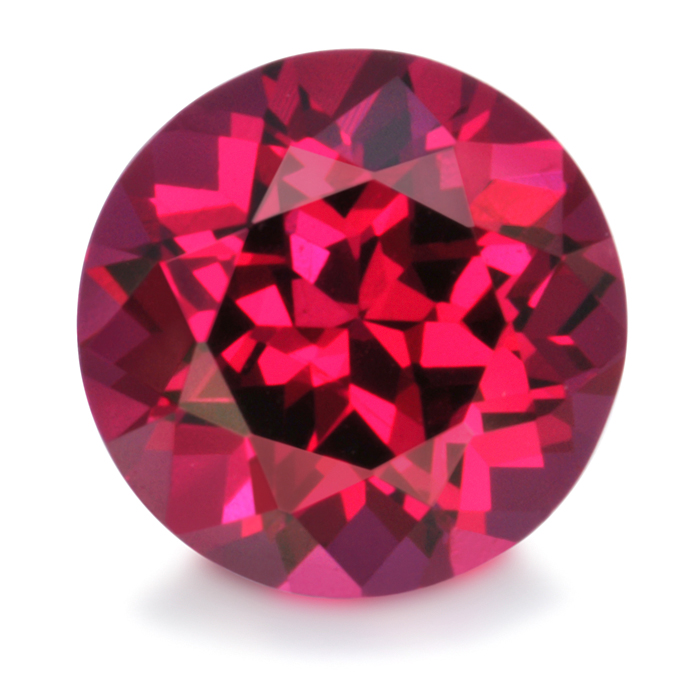Pyrope is typically dark red to slightly brownish-red and is considered by some to be the reddest of all the garnets. It is the only member of the garnet family to always display red coloration and it is from this characteristic that it gets its name: from the Greek for fire and eye.

In the past, Pyrope was a widely used gemstone with numerous alternative names and misnomers. It reached its peak in popularity in the 18th century when it was mined in Eastern Europe (Czech Republic) and known as "Bohemian garnet". Today, with new discoveries of more abundant and often more attractive red garnets like rhodolite and malaia, the relative popularity of pyrope has declined.
Pyrope is an end-member of a solid solution garnet series with the other end member being alamandite. The chemical composition of Almandite is Fe3Al2(SiO4)3 while Pyrope´s composition is Mg3Al2(SiO4)3 so the only apparent difference is the presence of iron or magnesium. These garnets are gradational in composition and include varying percentages of iron and magnesium. Rhodolite is the mid member of this series and it contains both magnesium and iron. However, the red color is not only related to the basic chemistry and the position in the series, but also to trace amounts of chromium and even grossularite in some cases.
It is interesting to note that the substitution of iron for magnesium results in both a higher specific gravity as well as a higher refractive index so Alamandite has both a higher refractive index and specific gravity. The comparative specific gravities are 3.6 for pyrope and 4.3 for almandite while respective refractive indices and 1.73 and 1.81.
The most well-known deposit of pyrope is the "Ant Hill" garnet deposit along the Arizona/New Mexico border in the USA. It is known as "Anthill Garnet" because it is mined by ants that carry the very small grains up in the process of excavating their anthills.
The most attractive stones from the Anthill deposit are known as "chrome pyropes". With a higher concentration of chromium, some of the stones are even vivid in coloration. The vivid red color is caused by the combination of chromium and an ideal range and proportion of Cr/Fe as well as pyrope and grossular-hessonite. In garnets, this combination of pyrope and grossularite is uncommon so attractive stones are a rarity. All the colors also contain some almandine, and minor amounts of andradite.
Pyrope garnets are also sometimes associated with diamond deposits and it was the findings of pyrope on the surface of the Kalahari desert and in the alluvial deposits of the Eastern Europe that led to important diamond discoveries in Namibia and Russia. There are no other deposits that have received much notoriety. As most of the pyrope deposits produce dark to over dark stones, there is little interest to extract them and unless some new source of large, beautiful and easy to reach stones become available the production of pyrope will remain limited.
All trademarks and logos shown herein are the property of their respective owners. © Copyright Multicolour Gems Ltd, 1998-2001. All rights reserved. Use of this site constitutes acceptance of Multicolour Return Policy, Privacy Policy and Trading Guarantee. Multicolour.com headquarters at # 59 Soi Pradit, Silom Soi 20, Bangkok, 10500, Kingdom of Thailand, Tel: +66 2 233-2108, Fax: +66 2 236-5274, E-mail to info@multicolour.com. Lost? Check Site Map. Site design and maintenance by NetComposite ®.
|